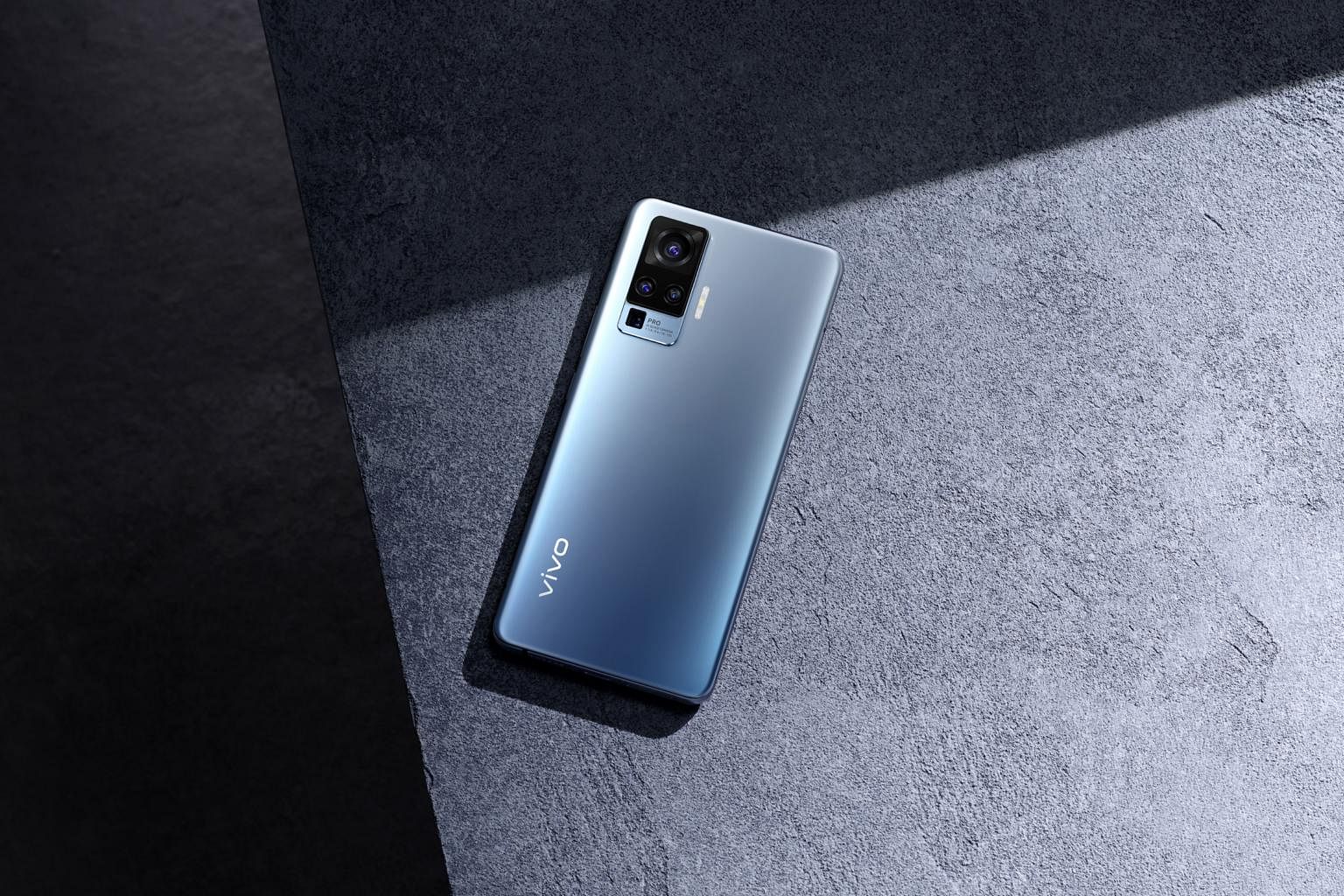Tech review: Vivo X50 Pro 5G tackles shaky videos with gimbal camera system
Sign up now: Get ST's newsletters delivered to your inbox

The Vivo X50 Pro's main camera produces 12MP photos that look sharp and detailed in good lighting conditions.
PHOTO: VIVO
Vincent Chang
Follow topic:
Vivo was one of the first smartphone makers to introduce innovative features such as the in-display fingerprint sensor and the pop-up front camera.
With its latest Vivo X50 Pro 5G smartphone (available on Lazada and Shopee), the Chinese brand is turning its attention to camera shake, which leads to blurry photos and videos.
Existing smartphones rely on both optical image stabilisation (OIS) and electronic image stabilisation (EIS) to tackle camera shake.
The former is a mechanical system that compensates for motion by physically shifting the camera on the vertical and horizontal axes, while the latter uses software to crop and align individual frames to ensure steady video.
Vivo's solution is a miniature gimbal that adds a third axis of stabilisation to compensate for the forward and the backward movement while you are moving with the smartphone camera.
And it actually works, though the X50 Pro's gimbal system only really shines in extreme cases, such as shooting a video while running or in a dark environment.
For instance, the video I shot while running was significantly less shaky than a similar video I shot with the Google Pixel 4 XL.
To help users know when to hit the shutter button for the most stabilised photo or video, Vivo has added an overlay in the camera app. Dubbed gimbal radar, it uses an animated ball to represent the movement of the gimbal. Vivo says you should try to keep this ball within the small circle while capturing the photo or video.
The X50 Pro's main camera uses a 48-megapixel (MP) image sensor from Sony that produces 12MP photos that look sharp and detailed in good lighting conditions. However, the colour accuracy and dynamic range are not quite as good as the top models.
Low-light photos and videos are decent, albeit with a marked increase in noise. There were also some splotches on uniform surfaces in low-light shots.
The X50 Pro also has a periscope-type telephoto camera that offers up to 5x optical zoom and 60x digital zoom. While the 5x optical zoom is useful enough, the 60x digital zoom feels like a marketing gimmick as images are very blurry.
A 13MP bokeh camera that offers 2x optical zoom and an ultra-wide 8MP camera completes the X50 Pro's set of four rear cameras.
At the front, Vivo has gone with a 32MP hole-punch camera that takes very decent selfies and has a variety of beautifying options.
This small unobtrusive camera blends into the phone's 6.56-inch Amoled screen, which is curved at the sides for a near-bezel-less look. This screen also has a 90Hz refresh rate that feels smooth when navigating the interface or scrolling down a Web page.
Thanks to its Qualcomm Snapdragon 765G chip, the X50 Pro supports 5G networks. Performance-wise, the 765G chip is a step down from the Snapdragon 865 processor used by this year's top 5G phones. But the difference is slight enough during normal usage that I doubt users would notice it without a side-by-side comparison.
Perhaps the slower 765G is also a reason for the X50 Pro's superb battery life. It lasted 16hr5min in our video-loop test with the screen brightness set to maximum. This is longer than the 14hr27min achieved by the Xiaomi Mi 10 Pro 5G, which uses the Snapdragon 865.
The X50 Pro could probably pass off as a premium smartphone, especially with its matt glass back and excellent build quality. But it lacks flagship niceties such as water resistance and wireless charging, while staple mid-range features like the headphone jack and expandable storage are also missing.
With a retail price of $1,099, the X50 Pro is clearly not a mid-range model. In fact, Vivo has a higher-end X50 Pro Plus model (unavailable in Singapore) that uses the Snapdragon 865 chip, but without the gimbal system. Meanwhile, the X50 ($799) has neither the 865 chip nor the gimbal system.
In short, if you don't see the value of the gimbal system, the OnePlus Nord ($649) may be a better option for those shopping for a relatively inexpensive 5G phone now.
FOR
- Gimbal system reduces camera shake in photos and videos
- Smooth and vibrant display
- Excellent battery life
AGAINST
- No flagship features such as wireless charging or water resistance
- No mid-range features such as headphone jack or expandable storage
SPECS
Price: $1,099
Processor: Qualcomm Snapdragon 765G (Single-core 2.3GHz, single-core 2.2GHz, hexa-core 1.8GHz)
Display: 6.56-inch Amoled, 2,376 x 1,080 pixels, 398 ppi pixel density
Operating system: Funtouch OS 10.5 (Android 10)
Memory: 256GB, 8GB RAM
Rear camera: 48MP (f/1.6), 8MP ultra-wide (f/2.2, 120-degree), 13MP bokeh (f/2.5), 8MP telephoto (f/3.4)
Front camera: 32MP (f/2.5)
Battery: 4,315mAh
RATING
Features: 4/5
Design: 4/5
Performance: 4.5/5
Value for money: 4/5
Battery life: 5/5
Overall: 4/5
This article contains affiliate links. If you buy through these links, we may earn a small commission.

